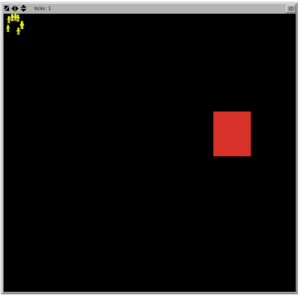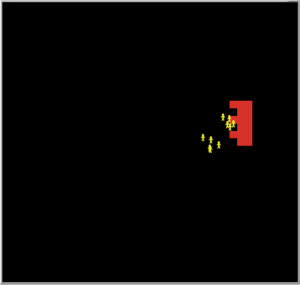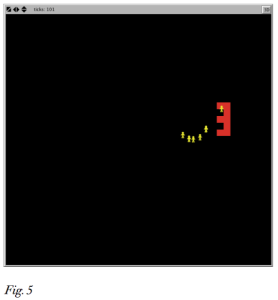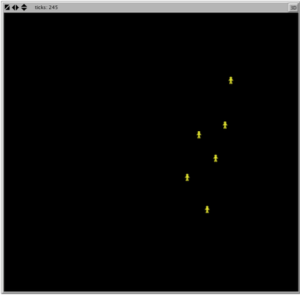On National Security Strengthened through LLMs and Intrinsic Bias in Large Language Models
Posted: November 18th, 2024 | Author: Domingo | Filed under: Artificial Intelligence, Geopolitics | Tags: Artficial Intelligence, Disinformation, GenAI, geopolitics, Large Language Models, LLMs | Comments Off on On National Security Strengthened through LLMs and Intrinsic Bias in Large Language ModelsSome days ago and for my PhD research, I finished reading some papers about AI, disinformation, and intrinsic biases in LLMs, and “all this music” sounded familiar. It reminded to me a book I read some years ago by Thomas Rid, “Active Measures: The Secret History of Disinformation and Political Warfare”… As it was written in the Vulgate translation of Ecclesiastes: “Nihil sub sole novum.“
Let’s tackle briefly these topics of national security and disinformation from the angle of the (Gen)AI.
On National Security
The overwhelming success of GPT-4 in early 2023 highlighted the transformative potential of large language models (LLMs) across various sectors, including national security. LLMs have the capability to revolutionize the efficiency of this realm. The potential benefits are substantial: LLMs can automate and accelerate information processing, enhance decision-making through advanced data analysis, and reduce bureaucratic inefficiencies. Their integration with probabilistic, statistical, and machine learning methods can improve as well accuracy and reliability: upon combining LLMs with Bayesian techniques, for instance, we could generate more robust threat predictions with less manpower.
Said that, deploying LLMs into national security organizations does not come without risks. More specifically, the potential for hallucinations, the ensuring of data privacy, and the safeguarding of LLMs against adversarial attacks are significant concerns that must be addressed.
In the USA and at domestic level, the Central Intelligence Agency (CIA) began exploring generative AI and LLM applications more than three years before the widespread popularity of ChatGPT. Generative AI was leveraged in a 2019 CIA operation called Sable Spear to help identify entities involved in illicit Chinese fentanyl trafficking. The CIA has since used generative AI to summarize evidence for potential criminal cases, predict geopolitical events such as Russia’s invasion of Ukraine, and track North Korean missile launches and Chinese space operations. In fact, Osiris, a generative AI tool developed by the CIA, is currently employed by thousands of analysts across all eighteen U.S. intelligence agencies. Osiris operates on open-source data to generate annotated summaries and provide detailed responses to analyst queries. The CIA continues to explore LLM incorporation in their mission sets and recently adopted Microsoft’s generative AI model to analyze vast amounts of sensitive data within an air-gapped, cloud-based environment to enhance data security and accelerate the analysis process.
Following with the USA but in an international level, the United States and Australia are leveraging generative AI for strategic advantage in the Indo-Pacific, focusing on applications such as enhancing military decision-making, processing sonar data, and augmenting operations across vast distances.
USA’s strategic competitors -e.g., China, Russia, North Korea, and Iran- are also exploring the national security applications of LLMs. For example, China employs Baidu’s Erni Bot, an LLM similar to ChatGPT, to predict human behavior on the battlefield to enhance combat simulations and decision-making.
These examples demonstrate the transformative potential of LLMs on modern military and intelligence operations. Nonetheless, beyond immediate defense applications, LLMs have the potential to influence strategic planning, international relations, and the broader geopolitical landscape. The purported ability of nations to leverage LLMs for disinformation campaigns emphasizes the need to develop appropriate countermeasures and continuously scrutinize and update (Gen)AI security protocols.
On Disinformation
What if LLMs already had their own ideological bias that turned them into tools of disinformation rather than tools of information?
It seems the times of search engine as information oracles is over. Large Language Models (LLMs) have rapidly become knowledge gatekeepers. LLMs are trained on vast amounts of data to generate natural language; however, the behavior of LLMs varies depending on their design, training, and use.
As exposed by Maarten Buyl et alii in their paper “Large Language Model Reflect the Ideology of their Creators”, there is notable diversity in the ideological stance exhibited across different LLMs and languages in which they are accessed; for instance, there are consistent differences between how the same LLM responds in Chinese compared to English. Similarly, there are normative disagreements between Western and non-Western LLMs about prominent actors in geopolitical conflicts. The ideological stance of an LLM often reflects the worldview of its creators. This raises important concerns around technological and regulatory efforts with the stated aim of making LLMs ideologically ‘unbiased’, and indeed it poses risks for political instrumentalization. Although the intention of LLM creators as well as regulators may be to ensure maximal neutrality, such high goal may be fundamentally impossible to achieve… unintentionally or fully intentionally.
After analyzing the performance of seventeen LLMs, the authors exposed the following findings:
- The ideology of an LLM varies with the prompting language: The language in which an LLM is prompted is the most visually apparent factor associated with its ideological position.
- Political people clearly adversarial towards mainland China, such as Jimmy Lai or Nathan Law, received significantly higher ratings from English-prompted LLMS compared to Chinese-prompted LLMs.
- Conversely, political people aligned with mainland China, such as Yang Shangkun, Anna Louise Strong, o Deng Xiaoping, are rated more favorably by Chinese-prompted LLMs. Additionally, some communist/marxist political people, including Ernst Thälmann, Che Guevara, or Georgi Dimitrov, received higher ratings in Chinese.
- LLMs, responding in Chinese, demonstrated more favorable attitudes toward state-led economic systems and educational policies, align with the priorities of economic development, infrastructure investment, and education, which are key pillars of China’s political and economic agenda.
These differences reveal language-dependent cultural and ideological priorities embedded in the models.
Another question the authors addressed was whether there was substantial ideological variation between models when prompted in the same language -specifically English-, and created in the same cultural region -i.e., the West. Within the group of Western LLMs, an ideological spectrum also emerges. For instance and amongst others:
- The OpenAI models exhibit a significantly more critical stance toward supranational organizations and welfare policies.
- Gemini-Pro shows a stronger preference for social justice, diversity, and inclusion.
- Mistral shows a stronger support for state-oriented and cultural values.
- The Anthropic model focuses on centralized governance and law enforcement.
These results suggest that ideological standpoints are not merely the result of different ideological stances in the training corpora that are available in different languages, but also of different design choices. These design choices may include the selection criteria for texts included in the training corpus or the methods used for model alignment, such as fine-tuning and reinforcement learning with human feedback.
Summing up, the two main takeaways concerning disinformation and LLMs are the following:
- Firstly, the choice of LLM is not value-neutral, specifically when one or a few LLMs are dominant in a particular linguistic, geographic, or demographic segment of society, this may ultimately result in a shift of the ideological center of gravity.
- Secondly, the regulatory attempts to enforce some form of ‘neutrality’ onto LLMs should be critically assessed. Instead, initiatives at regulating LLMs may focus on enforcing transparency about design choices, which may impact the ideological stances of LLMs.




